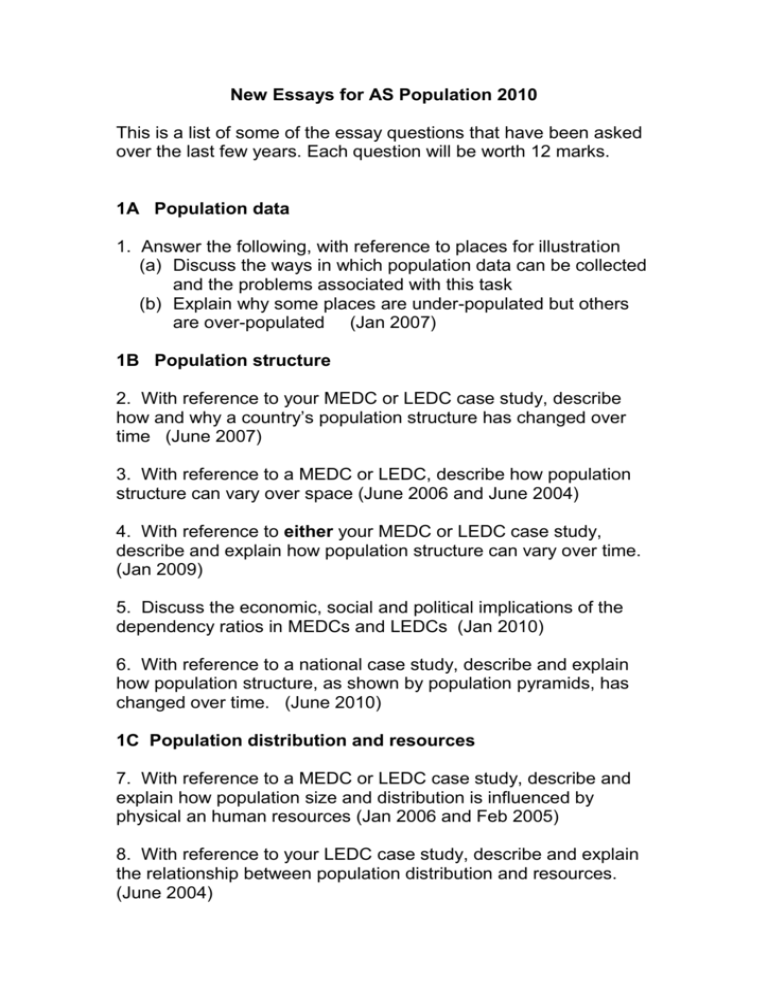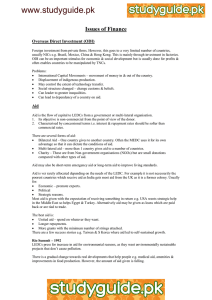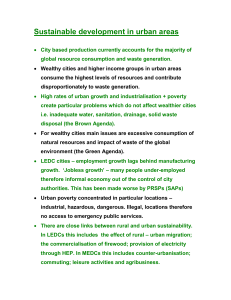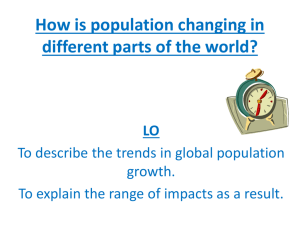New Essays for AS Population 2010
advertisement

New Essays for AS Population 2010 This is a list of some of the essay questions that have been asked over the last few years. Each question will be worth 12 marks. 1A Population data 1. Answer the following, with reference to places for illustration (a) Discuss the ways in which population data can be collected and the problems associated with this task (b) Explain why some places are under-populated but others are over-populated (Jan 2007) 1B Population structure 2. With reference to your MEDC or LEDC case study, describe how and why a country’s population structure has changed over time (June 2007) 3. With reference to a MEDC or LEDC, describe how population structure can vary over space (June 2006 and June 2004) 4. With reference to either your MEDC or LEDC case study, describe and explain how population structure can vary over time. (Jan 2009) 5. Discuss the economic, social and political implications of the dependency ratios in MEDCs and LEDCs (Jan 2010) 6. With reference to a national case study, describe and explain how population structure, as shown by population pyramids, has changed over time. (June 2010) 1C Population distribution and resources 7. With reference to a MEDC or LEDC case study, describe and explain how population size and distribution is influenced by physical an human resources (Jan 2006 and Feb 2005) 8. With reference to your LEDC case study, describe and explain the relationship between population distribution and resources. (June 2004) Population distribution is related to the availability of physical and human resources’. Discuss this statement with reference to a national case study. (June 2009) Marking structure This is taken from the mark scheme for the Jan 2010 essay question This question asks the candidates to look at social, economic and political implications. Do not expect all three for both MEDCs and LEDCs but they must be included somewhere in the answer. The first element to their answer will be that MEDCs have an aged dependency ratio while LEDCs have a youth dependency ratio. The implications they may discuss might include: MEDC-economic: provision of pensions for the increased number of elderly, reduced taxes from the falling number of economically active, increased burden on the economically active, stagnation in the housing market, increased costs of caring for people who are infirm and incapable of looking after themselves, a division in the elderly over those surviving on state pensions and those surviving on private pensions. Social: increased manufacturing of elderly products, therefore less products for younger markets, reduced number available to work in army or health service so reduced quality of service. Political: growing debate over issues such as euthanasia. LEDC-economic: increased funding needed for young facilities and services, such as maternity wards and primary schools. This on top of an already overstretched economy. Increased numbers of people looking for employment. Social: increased malnutrition among the young as scarce food resources are stretched even further. A higher infant mortality rate may then occur. Political: inability to provide for the increased number of young people may create political unrest and conflict. MARKS Level 3 ([9]–[12]) A very good answer that clearly identifies the differing dependency ratios in LEDCs and MEDCs and offers economic, social and political implications. Level 2 ([5]–[8]) Still a good answer but the depth of knowledge on the implications may be less and either the LEDC or MEDC may be less well addressed. Candidates who omit either economic, social or political implications will be restricted to this level. Level 1 ([1]–[4]) Answer with inaccuracies or lacking an understanding of the question will be included in this level. [12]











